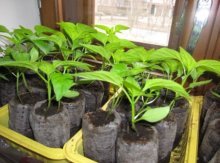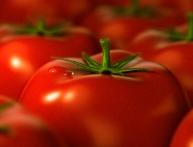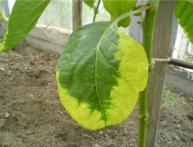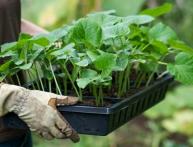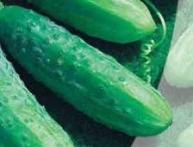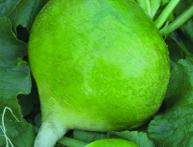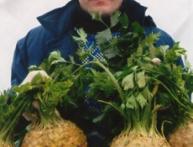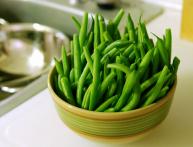Pepper "Morozko" and its cultivation
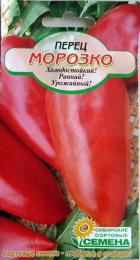
Sweet bell pepper is a popular vegetable crop, delicious fresh or canned, changing the taste of almost any dish for the better. To grow sweet peppers and get a good harvest, you need to know some of the subtleties of the process.
Content:
Pepper "Morozko" and other varieties

Sweet Bulgarian pepper has many varieties that can be divided into early, mid-early and late. In addition, they differ in color, shape and wall thickness. Thus, “Morozko” pepper is a mid-early variety; it reaches technical ripeness in 115 days, and full ripeness (when its color turns red) in 125 days. Technical ripeness in all varieties assumes a green color; at this time, it is recommended to remove the peppers and place them in special boxes for ripening.
If the fruits are left on the bush until biological ripeness, the total yield will be less, since the plant’s energy will be spent on ripening the fruits, and not on the formation of new ones. The fruits of this variety are cone-shaped and directed horizontally. The weight of one fruit is about 100 g, the wall thickness is up to 0.7 cm. The yield in open ground is 1-2 kg/m2, in closed ground, of course, it will be higher.
Pepper "Morozko" is disease-resistant, productive, has an excellent taste (at least that's what the seed says on the package), so why not buy it? Of course, it’s worth purchasing if you live in Western Siberia, but if you live in Ukraine, I wouldn’t recommend it.A variety intended for the Western Siberian region is unlikely to please residents of regions and countries with a completely different climate with a high yield; it is better to choose a variety zoned in the area of residence.
Growing seedlings
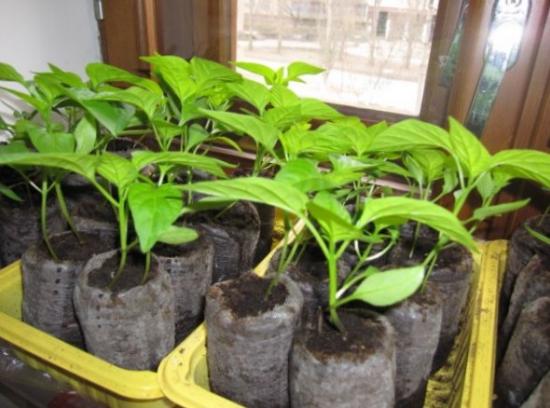
If you are going to get a good harvest of pepper, you need to know some of its features. Seeds peppers, especially large-fruited ones, germinate poorly and slowly. It is better to pre-soak them in Epin, Zircon or another growth stimulant. When they swell slightly, or better yet, hatch, they are planted in soil or peat tablets, lightly sprinkled with soil. Here it is important to take into account another feature of the plant: it has an extremely negative attitude towards any transplants, gets sick for a long time after them, and produces a small harvest. Therefore, if seeds are planted in the ground, then immediately into a large container in which the seedlings will live until planting in open ground or a greenhouse. At the same time, it is important not to bury the seeds too much, but only lightly sprinkle them with soil to make it easier for them to break through. For the first time, each container must be turned into a mini-greenhouse, covered with polyethylene or glass.
When planting in peat tablets, proceed as follows: place the tablets in a container with the open side up, pour in a little water and wait about 15 minutes until they absorb it and turn into small barrels. The remaining water is poured out. Next, the seeds are placed one at a time in the center of each barrel and sprinkled with a little soil. Next, the container is also turned into a greenhouse, covered with a transparent lid or glass. Peppers take quite a long time to germinate, sometimes up to 2 weeks. All this time, the greenhouses need to be ventilated and moistened.After the seedlings appear, the greenhouse is eliminated, and when they have a pair of true leaves, the peat barrels are carefully freed from the mesh and, together with the peat, without damaging the roots, they are planted in a large container.
Pepper care

On a site, in open ground or greenhouse, seedlings are planted only after the threat of return frosts has passed. The distance between plants is approximately 40 cm, between rows - about 50, they need sufficient feeding area. It is better to do this in cloudy weather or evening hours, deepening the bushes to the cotyledon leaves. It is necessary to add humus to the holes, otherwise you will not get a good harvest. First, the plants are shaded from the overly active sun, then the shelters are removed. Further care consists of watering, weeding, loosening and feeding with mineral fertilizers. The first time the plants are fertilized with superphosphate and urea a couple of weeks after planting. When the first ovaries appear, the plant will need potassium sulfate and superphosphate if there is too little phosphorus in the soil. When the fruits ripen, the plant is usually fed with wood ash, which is a potassium fertilizer.
Peppers are watered not often, but generously; 2-3 times a week will be quite enough. Plant trunks gradually become lignified, so it is believed that they do not need a garter. However, some bushes of particularly productive varieties break from the weight of their own fruits, in which case they are tied up like tomatoes. The crop has good keeping quality and the ability to ripen to biological ripeness after being harvested.

